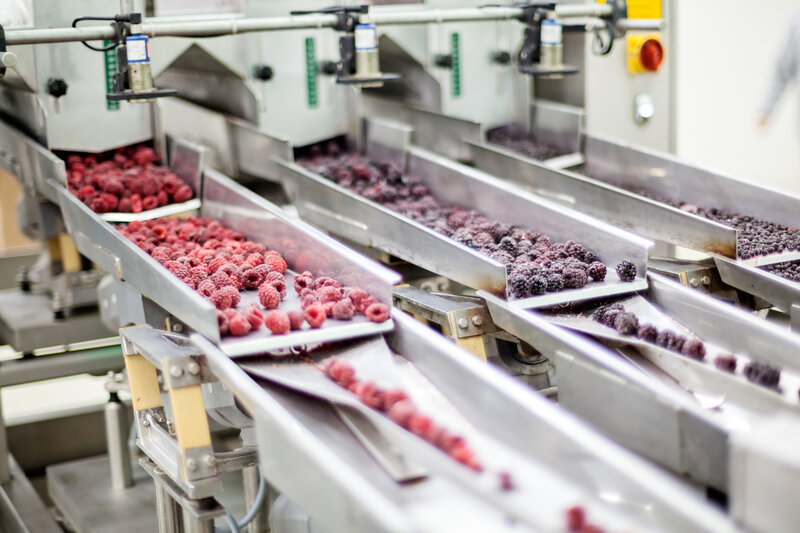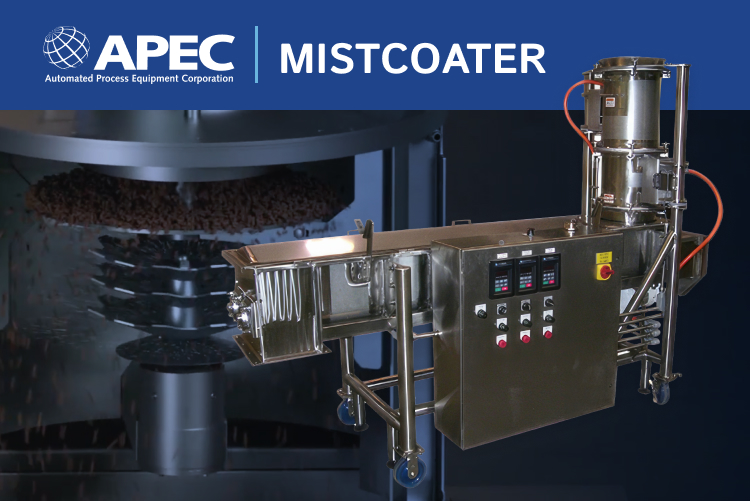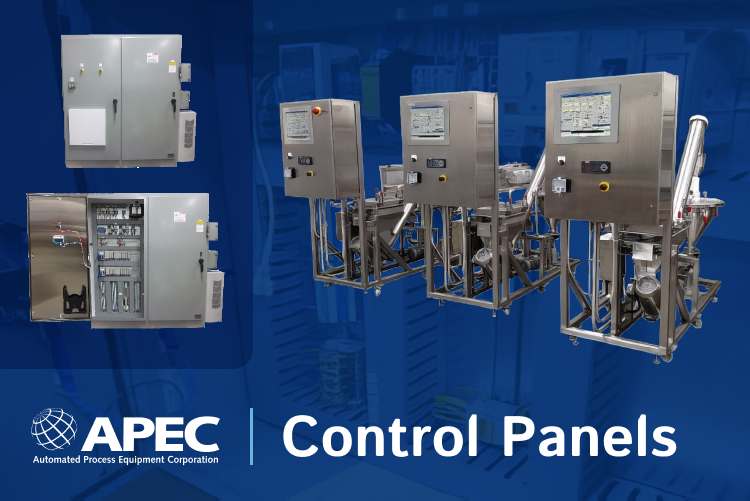
Reducing costs in food processing equipment doesn’t have to mean reducing product quality. In many cases, solving problems that cause waste or lost time will not only save money but will also improve the overall process and product quality. Utilizing lean manufacturing, technology at critical points, implementing preventative machine maintenance, and other measures can all help to reduce costs in food manufacturing.
Cost Saving Ideas in Manufacturing Food
1. Precision Measurement Reducing Ingredient Waste
Some ingredients require tight tolerances, and using too much of these ingredients can create product defects. Other ingredients are less exact, but using too much ultimately results in waste. In either case, using accurate and precise measuring tools can help to reduce unnecessary ingredient loss and over-use.
Finding the right load cell means considering the load cell capacity, scale instrument capacity, and the individual ingredient accuracy. It also means keeping the load cell accurate, and placing it properly to prevent noise, vibration, unbalanced loads, and other interference. In some cases, especially when the optimal ingredient amounts are significantly different, or have significantly different tolerances, it’s ideal to use different scales, which can function simultaneously. When there are multiple microingredients in use, a microingredient system will provide exact measurements. This will help to reduce costs in food manufacturing by reducing ingredient overfill or waste. Contact us today to find the right piece of food processing equipment to ensure accuracy and precision in measurement for your project, and to help leverage lean manufacturing in the food industry.
2. Reducing Product Defects Through System Design
A number of issues in food processing equipment can cause product defects, which can cause products to be discarded or recalled. Recognizing these issues and solving them through thoughtful system design will eliminate problems before they begin.
Systems constructed without good manufacturing practices (GMP) in mind can create product defects in a number of ways. For example, low-grade steel, improperly welded joints, or metal burrs can all introduce metal fragments into the mix. This will ultimately result in discarding or, worse, recalling large quantities. Working with an experienced manufacturer and vetting the manufacturer beforehand can prevent this.
Product liability defects might also result if ingredients are not properly mixed. A ribbon mixer must be filled to its swept volume for it to work properly, and underfilling the mixer—such as cases of lowered production requirements—will cause ingredient separation. The mixer design, including the volume and profile, among other features, should all be carefully considered in order to get a good mix within the right time frame. The mixer must also be allowed to run for the appropriate duration. Emptying the mixer prematurely ultimately will not save time, as it will create an inconsistent mix.
Material segregation after mixing can also cause product defects. Material segregation often occurs simply through the physics of movement, but it can be prevented by removing or rearranging certain processes.
3. Implementing a Preventative Machine Maintenance Plan Instead of Equipment Replacements
Preventative maintenance can be easy to overlook, however it’s one of the best cost saving ideas in manufacturing food. Regularly scheduling maintenance procedures and verifying that they are completed can prevent break-downs, but also prolong the life of expensive equipment. For example, with proper mixer maintenance, your mixer can last for decades. Without it, it can require parts replacements in a few years.
Make time for these essential maintenance procedures:
- Lubricating drive belts, chains and sprockets
- Calibrating load cells
- Checking and replace seals where necessary
- Check drive belt tension
- Check mixer alignment
- Check and replace electrical components where necessary
This preventative machine maintenance plan aligns with lean manufacturing in the food industry, which focuses on reducing unnecessary costs by upgrading equipment efficiency.
4. Lower Costs and Save Time With Bulk Ingredients
It’s no mystery that buying in bulk saves money long term. Transitioning from smaller bags to bulk bags also means adding some additional food processing equipment, but it can save time and reduce costs in food processing long-term. Properly installed, a super sack unloader with the right discharge makes it easy to dispense bulk food ingredients safely and efficiently.
5. Reducing Liability and Fines Through Design
Some costs are small and add up over time, however regulatory noncompliance or personal injury lawsuits can create heavy fines and legal costs. Reducing these as much as possible can help to reduce costs while also creating a safer product and safer workplace. Observing OSHA regulations for worker safety and the Food Safety and Modernization Act (FSMA) are the best ways to reduce expenses from liability.
The following are some of the most common causes of workplace injuries and deaths, which are also easy to avoid:
- Dust fires and explosions: emphasize the importance of cleaning and maintaining proper ventilation
- Slip-and-fall accidents: Ensure catwalks have safety railing, power cords are covered, wet floors are clearly marked, and employees have proper safety gear when working from heights.
- Electrical hazards: Make sure that electrical cords are not damaged, machines are properly and securely grounded, and electrical wiring is always conducted by a licensed electrician.
- Falling objects: Workers should never walk or stand underneath heavy objects, such as super sacks. If heavy objects move across the facility, make sure the path is clearly marked.
- Missing safeguards: Safeguards separating workers from dangerous machine parts such as mixing blades or electrical components should not be easily removable, and should be in place at all times.
- Shortcuts: Even the best safety procedures are ineffective without participation. Prioritize safety, state why these measures are important, and do not incentivize taking safety shortcuts.
6. Remove Downtime With Machine Synchronization
Lost time is essentially lost money. With the right system design, you can synchronize your machines and incorporate lean manufacturing in the food industry. This will reduce idle time as much as possible. By introducing some redundancy, you can also reduce the impact of a machine shut-down, while also improving productivity during a fully-functional process.
For example, measuring ingredients as they move through the system removes weighing time. Other devices measure ingredients as they move into or out of a holding vessel. With this fill time aligned with the next step, such as mixing time, measurements remain exact without losing any time between processes. By using two smaller mixers instead of one large mixer, you’ll also be able to continue production even if one mixer requires maintenance, repairs, or replacement.
Protecting the Future of Your Facility
These cost saving ideas for manufacturing food processes will help to create a more effective, efficient workplace. As you make improvements to facility maintenance procedures and measurement tools to your plant, keep these strategies in mind. Contact us today with any food processing equipment questions, part orders and more to keep your plant running its best.







